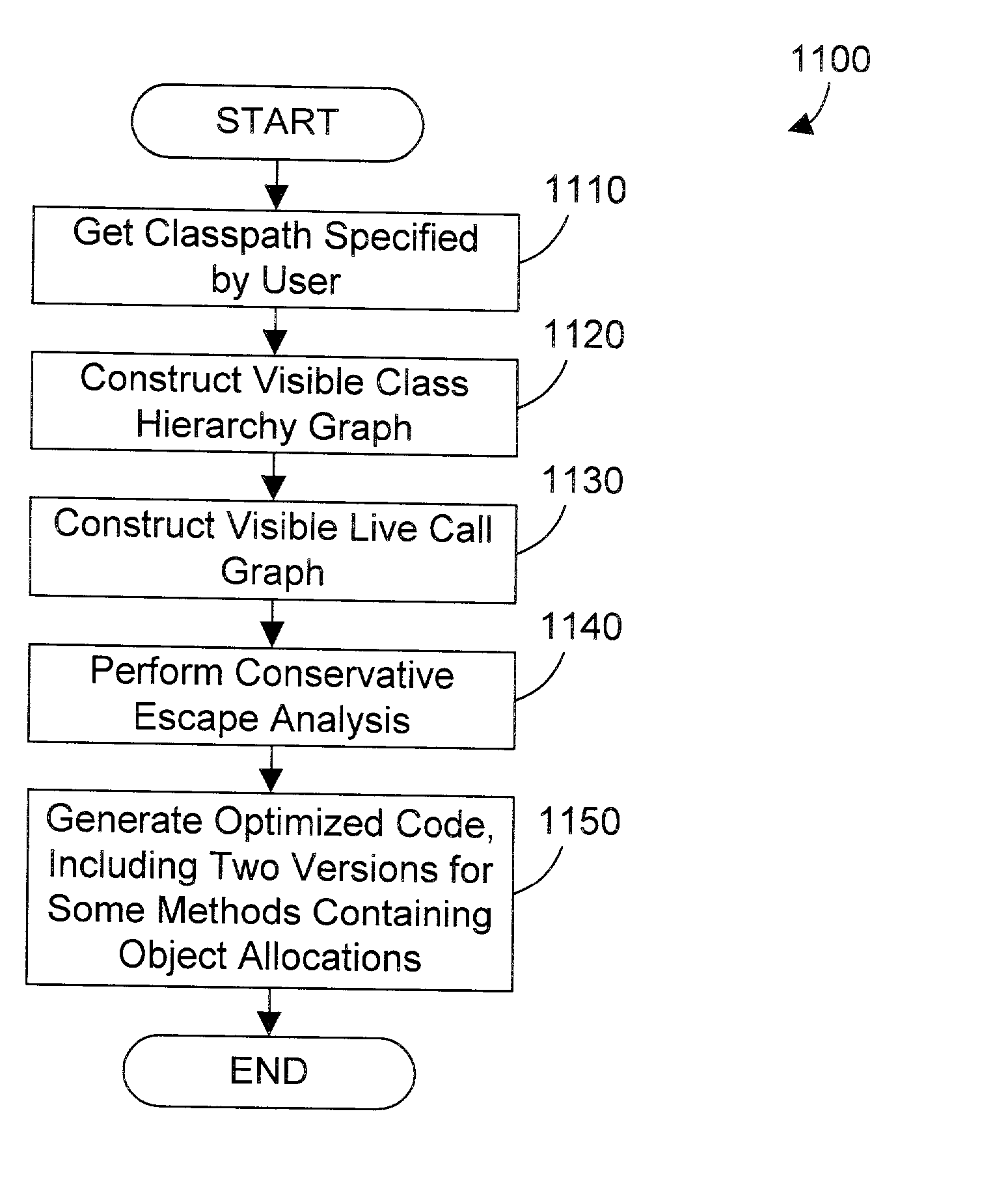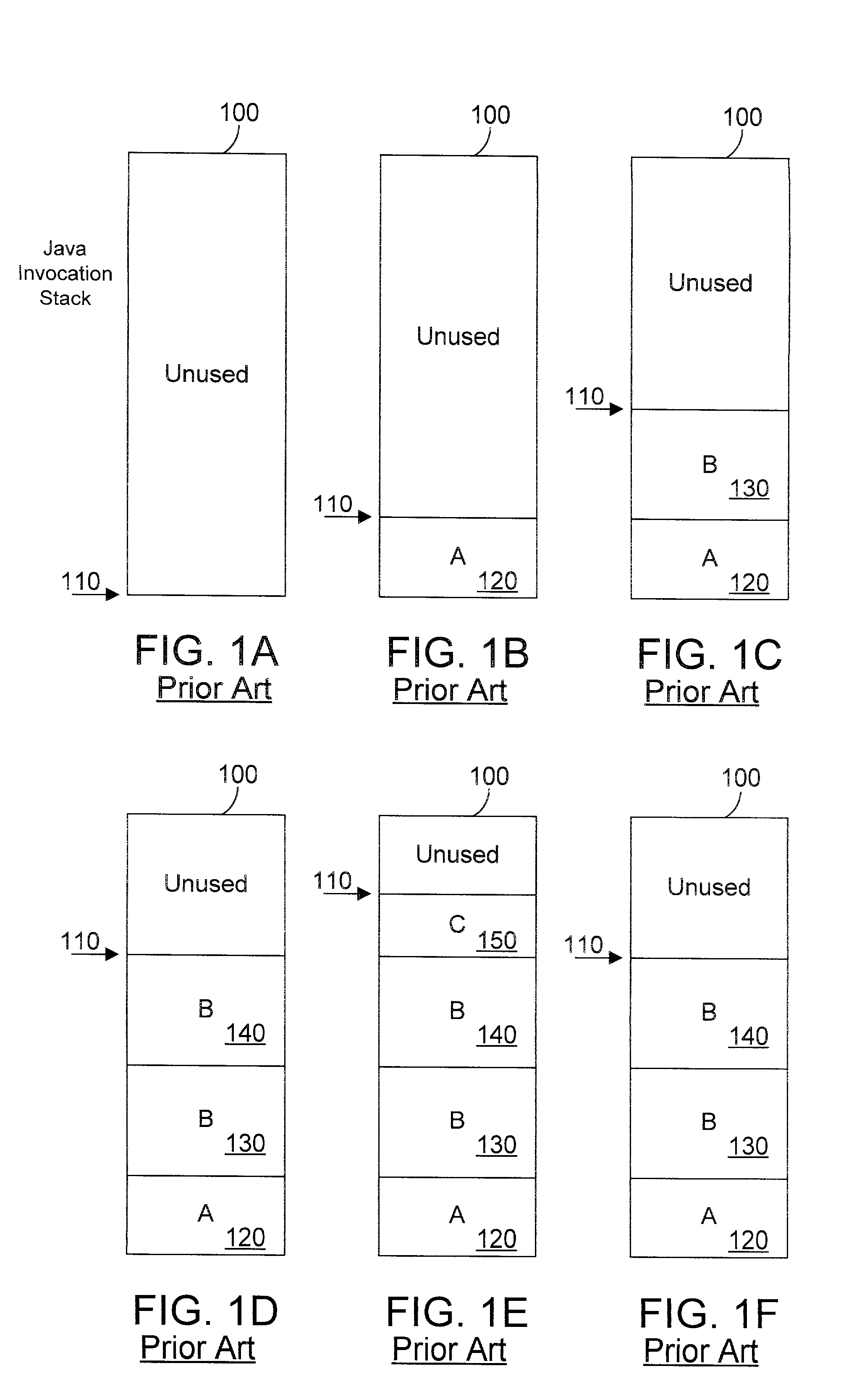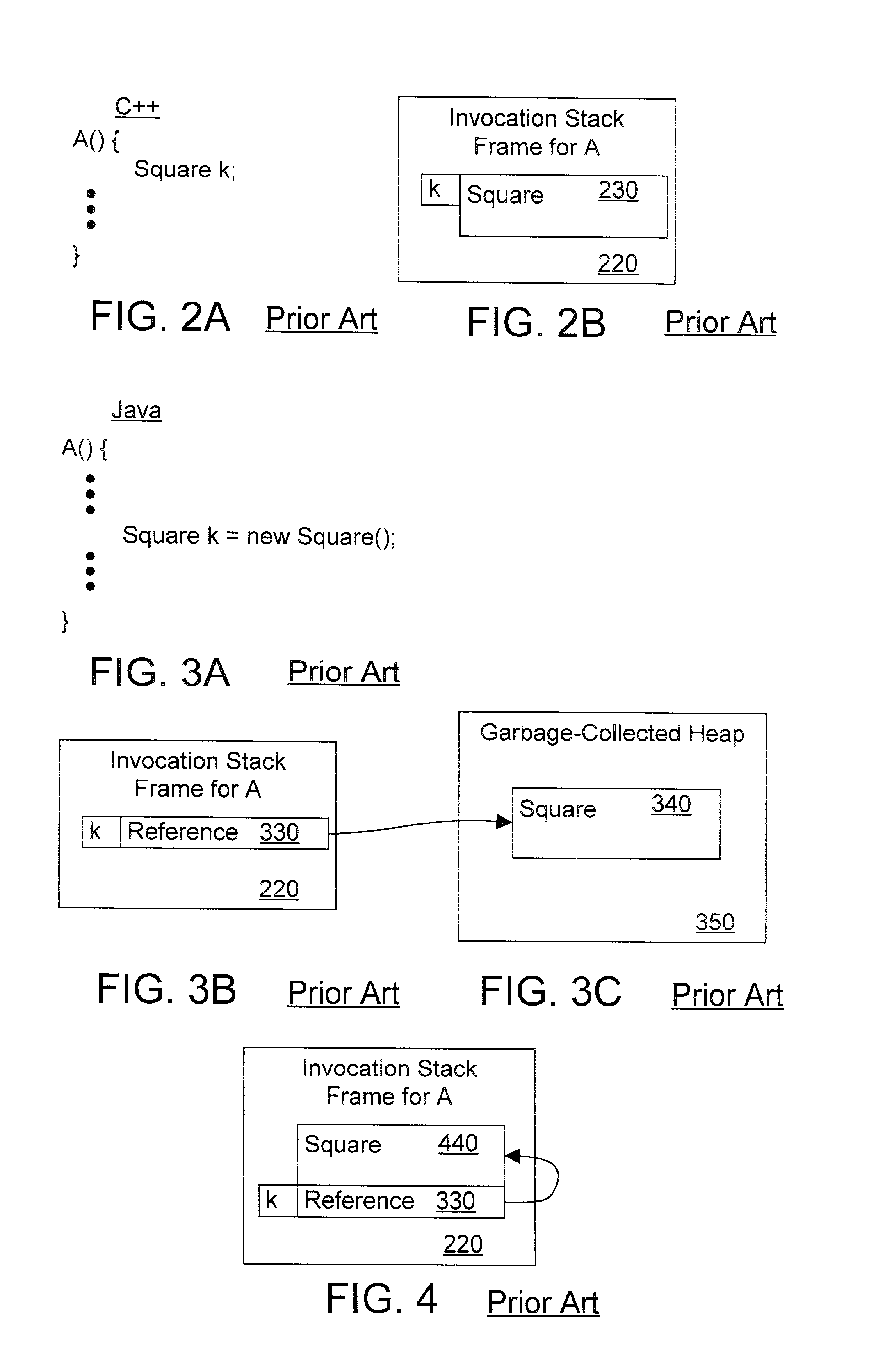Object oriented apparatus and method for allocating objects on an invocation stack in a partial compilation environment
object oriented technology, applied in the field of data processing, can solve the problem that the prior art choi et al. approach has never been used in a partial compilation environmen
- Summary
- Abstract
- Description
- Claims
- Application Information
AI Technical Summary
Benefits of technology
Problems solved by technology
Method used
Image
Examples
Embodiment Construction
[0079] An apparatus and method in accordance with the preferred embodiments perform an escape analysis, similar to the Choi et al. escape analysis known in the prior art, on objects that are allocated in a partial compilation environment, i.e., when classes are spread across multiple compilation units. The apparatus and method of the present invention performs escape analysis on classes visible in a particular compilation unit to determine whether to allocate an object on an invocation stack or on the heap based on the available information. Because information in other compilation units is not available, conservative assumptions are made regarding calls to methods that are outside of the current compilation unit. By stack allocating certain objects in a partial compilation environment, the performance of the computer program at run time is improved.
[0080] In a second aspect of the present invention, a user of the invention may compile a single compilation unit using analysis inform...
PUM
 Login to View More
Login to View More Abstract
Description
Claims
Application Information
 Login to View More
Login to View More - R&D
- Intellectual Property
- Life Sciences
- Materials
- Tech Scout
- Unparalleled Data Quality
- Higher Quality Content
- 60% Fewer Hallucinations
Browse by: Latest US Patents, China's latest patents, Technical Efficacy Thesaurus, Application Domain, Technology Topic, Popular Technical Reports.
© 2025 PatSnap. All rights reserved.Legal|Privacy policy|Modern Slavery Act Transparency Statement|Sitemap|About US| Contact US: help@patsnap.com



